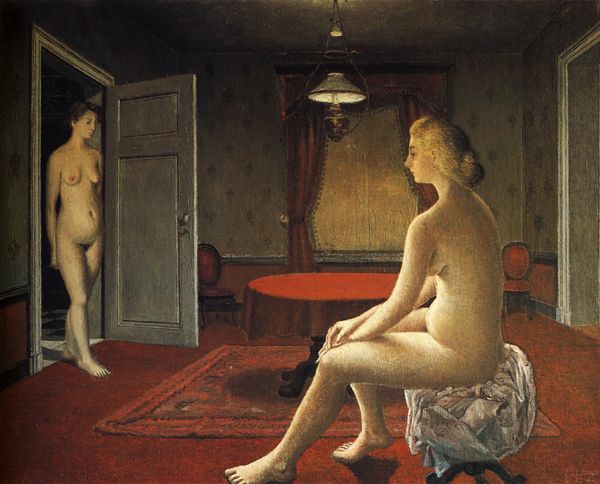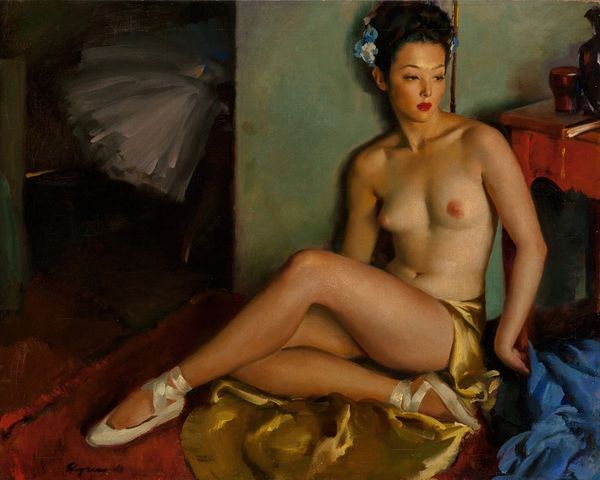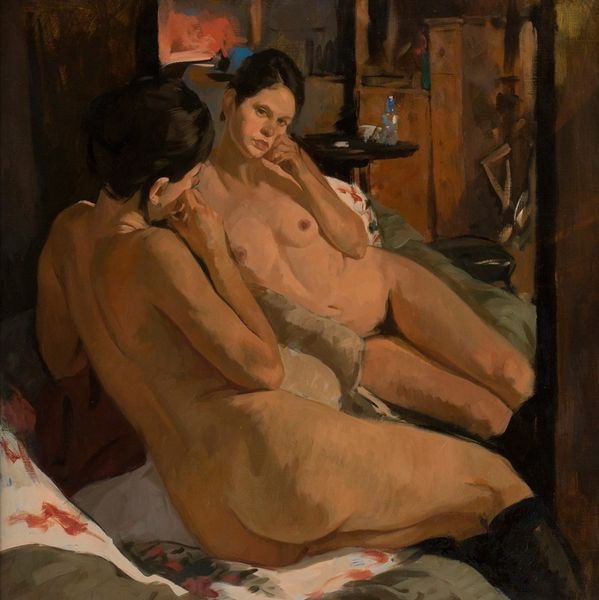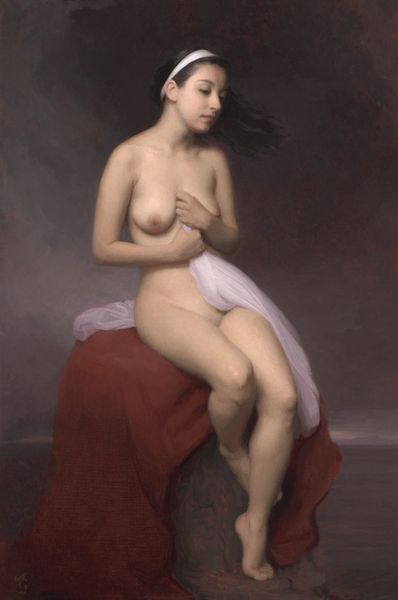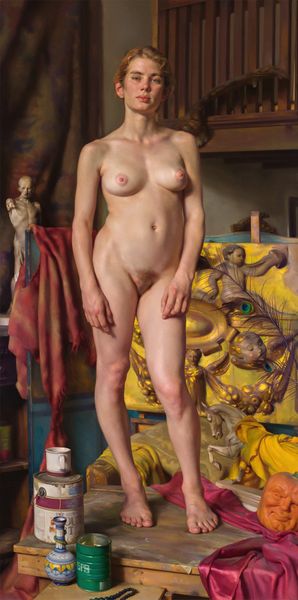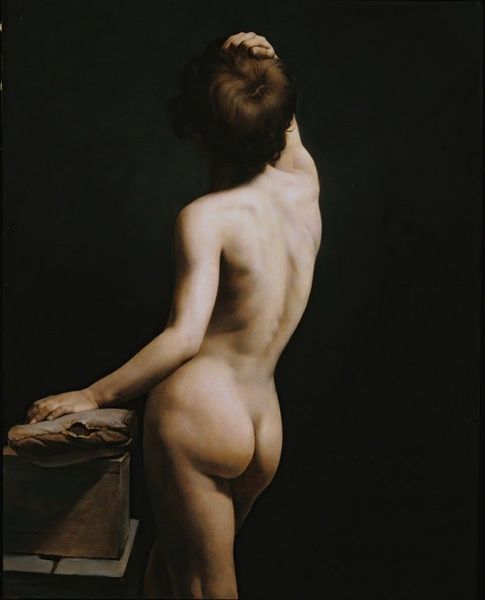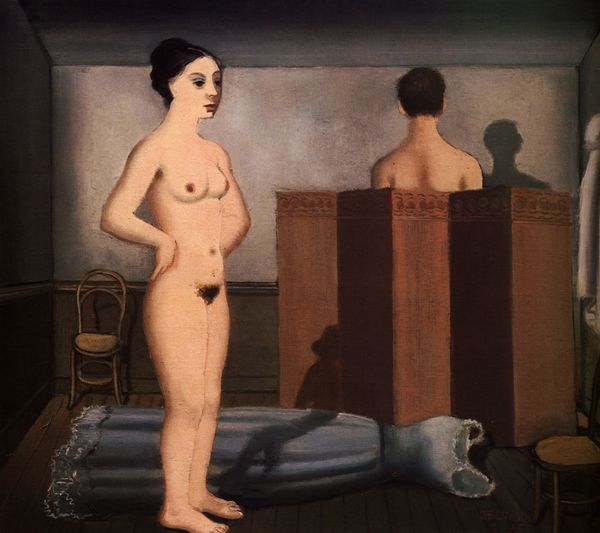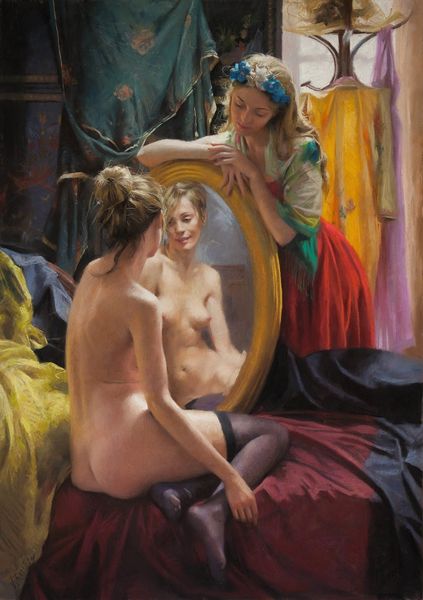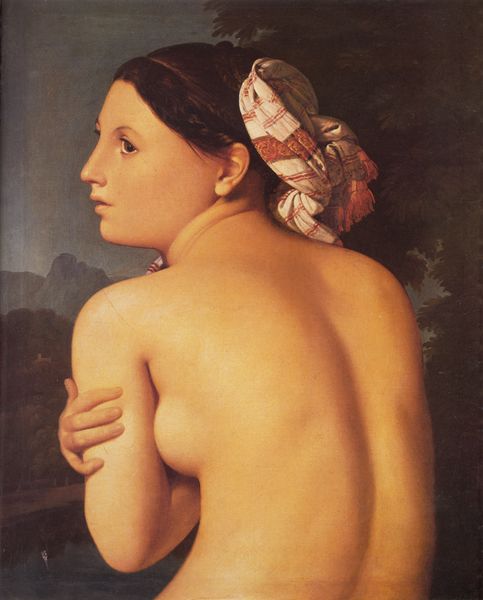
painting, oil-paint
#
portrait
#
art-deco
#
painting
#
oil-paint
#
figuration
#
genre-painting
#
realism
Dimensions: 48.25 x 36 cm
Copyright: Archibald Motley,Fair Use
Editor: We’re looking at Archibald Motley's "Brown Girl After Bath," painted in 1931. It's an oil painting of a nude woman looking in a mirror. I’m immediately struck by the intimacy of the scene and how it plays with the idea of self-reflection. What do you see in this piece? Curator: I see a powerful statement about the gaze, both internal and external. Motley, a key figure of the Harlem Renaissance, often explored themes of identity and representation within the African American community. This work is not just a portrait, it’s an intervention. In the 1930s, who had the power to represent whom, and how were Black bodies typically depicted? Editor: I suppose it's an active choice to paint the nude, when at the time black people were often marginalized in fine arts... so the artist reclaims something with the subject? Curator: Precisely. Consider the historical context: racial stereotypes were rampant. By portraying a Black woman in a moment of private vulnerability, Motley challenges those stereotypes and asserts her humanity and dignity. The "brown girl" isn't exoticized; she is presented as a fully realized individual, reflecting on her own image. Notice the flowers and vanity items --how do those everyday objects add to her representation? Editor: They certainly provide a feminine setting, without diminishing from her strength. So the artwork goes against stereotypes, while also celebrating Black womanhood. Curator: Absolutely. It also sparks discussions about gender, beauty standards, and the historical absence of diverse representation in art. We can use it as an important conversation point, don’t you agree? Editor: It definitely puts a new lens on portraits from that era. I appreciate understanding this painting in a new social and historical light.
Comments
No comments
Be the first to comment and join the conversation on the ultimate creative platform.


